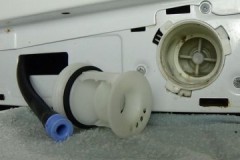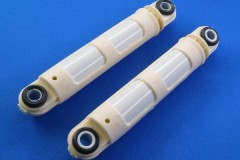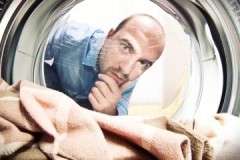Basic malfunctions of the Electrolux top-loading washing machine, do-it-yourself repairs
 Vertical washing machines from the Swedish manufacturer Electrolux are popular due to their quality and pricing policy. But even with them, breakdowns may occur after some time.
Vertical washing machines from the Swedish manufacturer Electrolux are popular due to their quality and pricing policy. But even with them, breakdowns may occur after some time.
To eliminate this problem, you need to familiarize yourself with common malfunctions of Electrolux top-loading washing machines, methods for solving them, and disassembly instructions.
Tips that will help you find a good master will also be useful.
Content
TOP 10 typical breakdowns of Electrolux ACS and ways to solve them
There are a lot of factors that can affect the performance of a washing machine, but some are very rare, while others are many times more common. To solve basic problems, it is enough to study 10 typical breakdowns and ways to fix them.
Doesn't start
When the clothes are loaded into the drum, the powder is in its compartment, and all that remains is to select a mode and start the equipment, a problem may arise: the washing machine does not turn on. The difficulty is that the information board also does not work, so for diagnosis you will have to conduct a visual inspection:
-
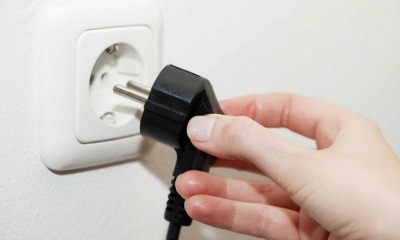 Checking the outlet. The machine may not turn on because there is no electricity supplied to the outlet.
Checking the outlet. The machine may not turn on because there is no electricity supplied to the outlet.To check this, you need to use an indicator screwdriver or simply plug in another electrical device.
- Checking the cord and plug. It is important that there are no signs of burning or damage on these elements. If this is the problem, then it is necessary to replace the cord with the plug, and not repair it with additional insulation.
- Line filter malfunction. Both the filter itself and its contacts can burn out. The problem is solved by replacing the element.
- Control panel problems. Water and detergents can get inside the structure, which will lead to oxidation and sticking of the buttons. To get to the panel, you need to remove the top cover, take out the tray, and replace damaged buttons.
The surge protector is located under the wall; its malfunction may be indicated by burnt marks or swelling of the housing.
Water does not fill or drain
Washing machines are designed in such a way that the water is changed several times during one wash. You can detect that the malfunction is in the liquid intake immediately after turning it on; there will be no noise accompanying the process, and the washing will not start.
Cleaning the tract will help solve the problem:
- you need to close the shut-off valve, disconnect the hose from the washing machine;
- pull out the filter mesh using pliers;
- the filter and hose are cleaned of dirt.
Powder is not picked up
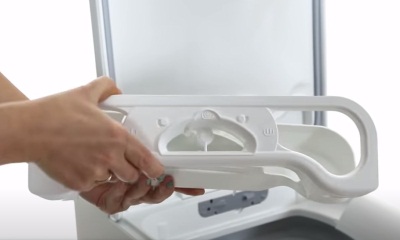 After several years of use, the quality of washing noticeably drops.There are stains on clothes, and it’s not at all due to wear and tear on the equipment.
After several years of use, the quality of washing noticeably drops.There are stains on clothes, and it’s not at all due to wear and tear on the equipment.
It happens that the problem is that part of the powder remains in a special compartment, and only clean water is used when washing.
The structural features of the SMA are that liquid enters the compartment, it is mixed with household chemicals and transported to the work area. Water enters the powder compartment through a special valve, which can become clogged.
To diagnose the problem, it is enough to check whether there is any powder left in the compartment after washing. If it is, then the following actions are performed:
- The cuvette is removed from the machine.
- The inlet valve is checked.
- If a part is clogged, it needs to be cleaned; if it is worn out, it needs to be replaced.
Rinse doesn't work
You can check whether rinsing really does not work by turning on a special mode. If this is really the problem and the mode does not work, you will have to repair the control board.
No spin, drum does not rotate
You can notice visually that the drum does not rotate after starting the washing machine. The cause of this malfunction may be problems with the drive belt. Depending on the degree of wear There are two options to solve the problem:
- When the belt comes off, but is still in good condition, you just need to pull it back. First, one side is pulled onto the motor pulley, and then the other side onto the drum pulley.
- If the rubber is stretched or cracked, you will have to replace it.
Another reason may be the motor brushes, because they are responsible for transmitting current to the rotor. During operation, the brush rods gradually wear out.If the degree of wear is more than 50%, then they need to be replaced with new ones.
The drum stopped in the wrong position
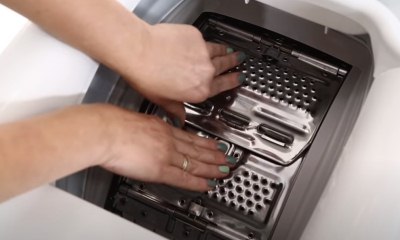 It also happens that when finishing washing, a person opens the top cover and sees a drum in front of him, the doors of which are at the bottom in the open position.
It also happens that when finishing washing, a person opens the top cover and sees a drum in front of him, the doors of which are at the bottom in the open position.
The reason for this phenomenon may be a broken locking part or loose closure of the valves. The problem is usually one-time and occurs rarely.
In order not to call a specialist and not spend a lot of money on it, it is better to turn the drum over yourself.
This is done like this:
- you need a long steel wire with a hook at the end;
- the wire bends down, you need to try to pry the sash and close the tank;
- the drum rotates to its normal position.
Water does not heat up
The fact that the wash is carried out in cold water becomes immediately noticeable. Additional factors are the appearance of an unpleasant odor and deterioration in the quality of washing. The problem may be with the heating element, sensor or circuit board.
First, check the heating element:
- You need to remove the back panel of the washing machine.
- At the bottom there is a heating element, all wires are disconnected from it.
- The temperament sensor must be removed from the housing.
- The nut, which is located in the center, must be twisted a little and pressed on the bolt.
The equipment starts, but the machine is triggered
If after startup there is an emergency power outage, then you need to call the technician. You should not try to start the machine again, it is dangerous.
Often the cause of RCD tripping is:
- motor short circuit;
- wiring short;
- breakdowns of the heating part.
Noise during operation
During washing, does the appliance vibrate and “jump” all over the floor? There are three possible reasons:
 Incorrect installation. To reduce vibration and rattling to a minimum, the equipment must be placed on a flat and hard floor.
Incorrect installation. To reduce vibration and rattling to a minimum, the equipment must be placed on a flat and hard floor.- Imbalance. If the clothes are all bunched up on one edge of the drum, it will touch the wall with this side. To prevent this, you need to distribute the laundry evenly.
- Bearing failure. To replace it, you will need to completely disassemble the washing machine.
A foreign object got into the washer
An item accidentally left in trousers or a jacket may pass through the cuff or hole and end up outside the tank, because of this:
- The washing machine makes a lot of noise;
- The drum may be damaged.
To remove an item you need:
- unplug the equipment from the outlet;
- remove the back panel of the machine;
- dismantle the heating element;
- put your hand inside, pull out a foreign object.
Instructions for disassembling a household appliance
The disassembly process begins with preparation, it is important:
- Prepare your tools in advance. You will need screwdrivers, pliers, and open-end wrenches. Additionally, you should stock up on WD-40 spray or an equivalent.
- Prepare the place. The washing machine is a large piece of equipment, and you need enough free space to disassemble it.
- Unplug the machine from the socket.
- Drain off any remaining liquid and remove the laundry from the drum.
The next step will be to dismantle the external components of the washing machine. You need to remove the lid, walls, detergent compartment, to do this:
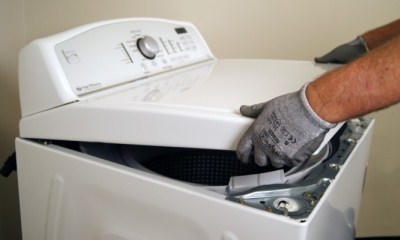 On the back you need to find and unscrew two screws and remove the panel.
On the back you need to find and unscrew two screws and remove the panel.- The cuvette for household chemicals must be removed all the way and pressed on the “tab”, it is located in the rinse aid compartment.
- Unscrew the fasteners that are under the powder box, and additionally unscrew the hatch fixing screws.
- The hatch clamp should be slightly pryed with a screwdriver and carefully pulled off.
- There are screws to the left of the electronic panel; you need to remove them, and then pry up the fasteners to remove the electronic module.
- Once the module is pulled out, you will have access to the screws holding the back and front panels.
Instructions:
- first you need to disconnect the terminals from the power unit, then turn the pulley with one hand and tighten the belt with the other;
- you need to unscrew the screws securing the engine;
- after unscrewing, the motor needs to be moved a little and pulled out;
- Then the pump wires are disconnected, the screws are unscrewed - to move the pump it must be turned clockwise;
- removing the wiring and sensor and heating element, then unscrew the nut located in the center, pull out the heating unit using swinging movements;
- the screws of the counterweights are unscrewed, the components are dismantled;
- After this, all that remains is to remove the dispenser pipes, the filling valve wiring and the pressure switch.
Call the master
Sometimes you can’t do everything yourself, or it’s just scary to get into the washing machine without experience in performing such work. In such cases, it is better to call a specialist.
There are several options:
- Contact a specialized company. You can find companies that do repairs online.The advantage is that you can immediately get acquainted with the reputation and reviews of the company, the disadvantage is that it will cost more than calling private craftsmen.
- Services for freelancers. There are special services, for example, “You Do”, where you need to set a task, describe the approximate breakdown, if possible, set a price. The master can respond to the task. Such services usually also have reviews and ratings, and the price is lower than on companies.
- Private advertisements. Private craftsmen post information about repair services on bulletin boards and social networks. But you should be careful with this method; there is always a risk of running into a scammer.
The cost of services depends on the pricing policy of a particular company or master and even on the city of residence. The table shows approximate prices for replacement parts:
| Call a specialist, diagnostics | 500-1000 rub. |
| Drum | From 2000 rub. |
| Motor replacement/repair | From 1500 rub./from 750 rub. |
| Button | From 1000 rub. |
| Water level/temperature sensors | From 1200 rub. |
| Bearings | From 2500 rub. |
| Email module | From 2500 rub. |
Other, less difficult to install components, for example, a power cord, a hatch latch, or removing a third-party object, will cost about 1000-1500 rubles including labor.
Unfortunately, there are quite a lot of scammers, because of them you can lose both money and equipment. Common schemes:
 Taking an advance for the visit of the master. Advances are possible only in cases where the master travels far outside the city, and even then not always. Usually, after sending the advance, the “specialist” number does not respond.
Taking an advance for the visit of the master. Advances are possible only in cases where the master travels far outside the city, and even then not always. Usually, after sending the advance, the “specialist” number does not respond.- The washing machine is taken to the workshop for repairs. Moreover, the address of this workshop is unknown; in such cases, the equipment can be taken away forever.
- Replacement of working units. A type of fraud when, in order to increase the check, they change something that still works.It is more difficult to understand such a situation; it is advisable to first read reviews about the honesty of the service.
Conclusion
Most of the common malfunctions of Electrolux top-loading washing machines can be identified and eliminated without outside help. To do this, you need to study the disassembly instructions, rules for cleaning or replacing main parts.
